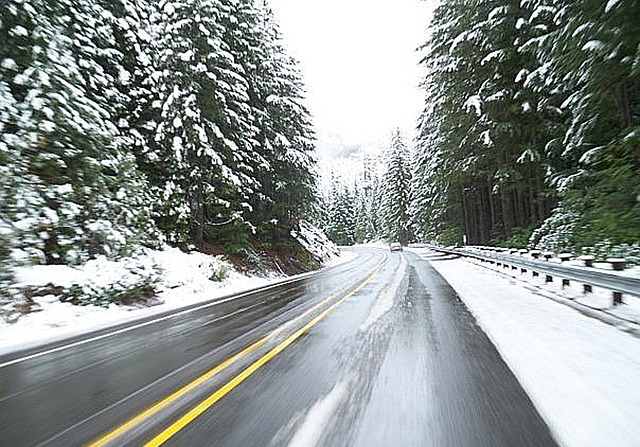
13 Jan Driving on Icy Roads
Originally posted December 08, 2014 by Scott Burton on https://www.roadcrazed.com
Driving in the ice can be a daunting task. While most others simply suggest avoiding frozen roads altogether, sometimes it is necessary to face Mother Nature’s wrath and test your luck out on the icy pavement. Although it’s different from what I usually write about on this blog, having to drive in these conditions myself has compelled me to offer a few pointers to you guys. And thus, I have compiled this list of tips of how to drive on icy roads both from my own personal experience and from other sources.
- Make sure your tires have plenty of tread. The more, the better. This is incredibly important. If your tires don’t have enough tread (6/32-inch, according to The Tire Rack), drive another car that does, or get another ride. It’s difficult enough driving with worn tires in the light rain, let alone driving over a thick sheet of ice. No tread is equivalent to no traction, which is a recipe for disaster when dealing with frozen roads.
- Get a feel for braking and steering. Cars handle differently in ice. Because of this, you’ll want to drive as slowly and cautiously as possible until you get used to how your vehicle stops and turns. And even when you think that you’ve got the hang of it, don’t get too comfortable – a slippery spot could be waiting for you just up ahead.
- Take the busier roads. Common sense. The more cars that are driving on a certain road, the smaller chance that ice will form. Also, the higher-traffic roadways usually have greater priority when it comes to deicing. Keep this in mind when planning your commute.
- If you get stuck, don’t spin your wheels. It doesn’t work. Trust me. Also, don’t panic. Try shifting into reverse to see if you’re able to move backwards. If that doesn’t work, try pouring sand, salt, or kitty litter in your path. If you’re still stuck, you may want to call for help.
- Avoid overpasses, if possible. Actually, ignore that “if possible” part. It’s almost always possible to avoid tall freeway overpasses. Sure, using an alternate route may take a little longer, but it’s significantly less hazardous and nerve-wracking. Plan accordingly.
- Don’t rely too much on technology. Anti-lock brakes and electronic stability control are helpful, sure – but they’re not going to make driving in the ice an effortless endeavor. Read your owners manual and learn how these technologies work. If you have ABS, apply full pressure to the brakes in order to stop in icy conditions. If not, gently pump the brakes until you come to a stop.
Well, that’s all I’ve got. Remember to keep your full attention on driving at all times, and be safe out there!
Sources: Edmunds.com and The Weather Channel






